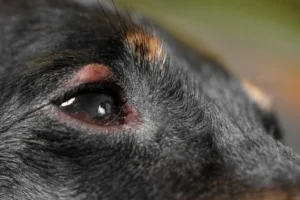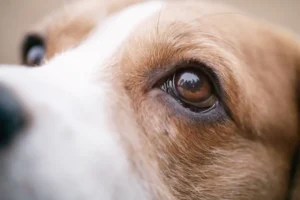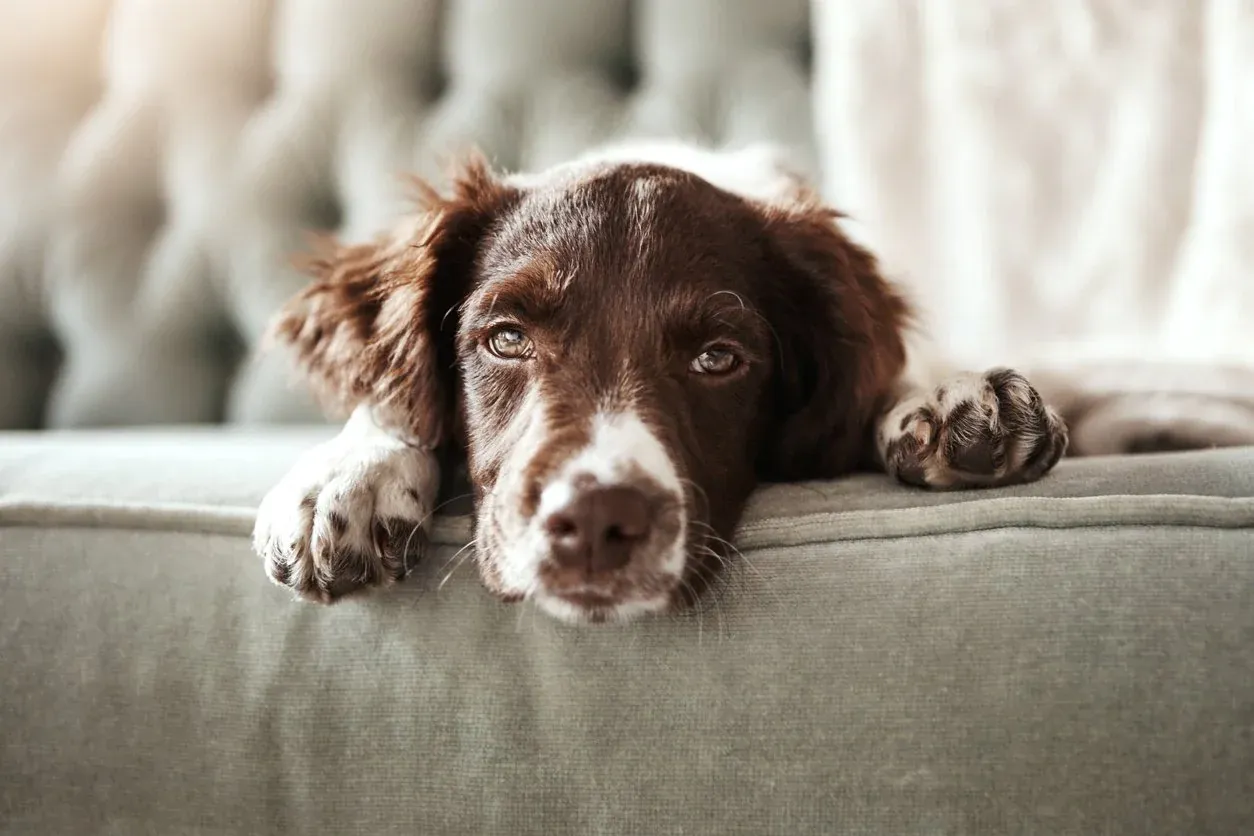Hey there, fellow pup parent! We all know that keeping our furry pals in the pink of health is a top priority. But sometimes, those adorable eyes that melt our hearts can run into trouble, like the pesky issue of dog eye styes. Not to worry, though – in this guide, we’re diving into the world of these eye bumps, figuring out what causes them, how to treat them, and best of all, how to prevent them from bothering our four-legged friends.
Treating Dog Eye Styes: Let’s Get Into It
So, let’s talk about those little bumps that sometimes show up on your dog’s eyelids. Yep, dog eye styes are like pimples for pups. They’re tiny, but they can cause some real discomfort. Let’s break it down:
What Are Dog Eye Styes?

Dog eye styes, or hordeolum (sounds fancy, right?), are those small, painful bumps that decide to set up camp on your dog’s eyelid. They’re like little zits, except they’re caused by bacteria having a party in your pup’s eyelid hair follicles or oil glands. Ouch! If not taken care of, these little guys can mess with your dog’s vision.
What Makes Styes Happen?
There are a few reasons why your pup might get a stye. Bacterial infections, usually brought to you by a bacterium named Staphylococcus aureus (say that three times fast), are a big player. But it’s not just bacteria’s fault – poor hygiene, blocked oil glands, and even those pesky ingrown hairs can all throw a stye party. Plus, some dogs are more prone, especially those with allergies or certain breeds with wrinkly faces.
How to Spot the Trouble
Your pup won’t exactly raise a paw and say, “Hey, I’ve got a stye!” But they’ll drop some hints. Look out for redness, swelling, and a little bump that’s almost like a pimple on the eyelid. If your dog is blinking non-stop, rubbing their eye, or squinting more than usual, it’s time to play detective and give your vet a call.
Treating Mild Styes at Home
Before you head to the vet, there are a few home remedies you can try to help your pup find some relief:
- Warm Compress: Picture this – gently place a warm, damp cloth on your pup’s stye for a few minutes a few times a day. This cozy technique can help the stye chill out and drain.
- Clean Face, Happy Pup: Grab a gentle cleanser approved by your vet and use it to clean around your dog’s eye area. Just don’t get too wild with chemicals – we want to keep that eye safe.
- Keep an Eye on Your Pup: While these tricks might work, if the stye is playing hard to get, it’s time to call in the professionals – your vet, that is.
When the Vet Takes the Lead
Sure, home remedies are cool, but sometimes a stye needs the vet’s touch. They’ve got the expert eye and know-how to handle this situation.
Going Beyond Home Remedies
While warm compresses and gentle cleansers can help, don’t forget to get your vet in on the action. They’ll give the stye a proper diagnosis and decide on the best action plan. If the stye is stubborn, they might need to drain it under clean conditions. Your vet could also recommend antibiotics or eye drops to give that stye a run for its money.
Taking on the Big Guns: Surgical Options

Let’s say your pup’s stye isn’t backing down. In rare cases, surgery might be the answer. But don’t worry – your furry friend won’t feel a thing.
Surgery to the Rescue
Surgical removal might sound scary, but it’s usually the last resort when a stye refuses to budge. Your vet will check how serious the situation is and decide if surgery is the way to go. And here’s the good part: your pup will be under anesthesia, so no pain involved. After the surgery, your vet will give you the lowdown on how to care for your dog as they heal up.
Preventing Styes: Get Ahead of the Game
Nobody likes unwanted guests, especially those eye styes. So, let’s see how you can kick them to the curb.
Keeping It Clean
Just like you wash your face, your pup needs some cleaning too. Gently wipe their face with a soft, damp cloth. Those eyes will thank you.
Food for Thought
Remember, good food equals happy eyes. Include foods that are like superheroes for eye health – carrots, blueberries, and anything rich in antioxidants. And don’t forget about omega-3 fatty acids found in fish oil. They’re like magic for those peepers.
Eye Exams Are a Must
Routine eye exams aren’t just for us humans. They’re essential for your pup too. Vets can spot issues early and help you keep those eyes sparkling.

Holding Their Paw Through Recovery
If your pup ends up with a stye, be their rock during the recovery phase.
Comfort is Key
Styes can be a pain, so create a cozy space for your pup to relax in. Avoid touching the stye, though – that’s a no-no.
No More Scratching
Your pup might want to itch that stye, but don’t let them! It could make things worse. If they’re persistent, consider using a cone collar to keep their paws away.
Vet Check-Ins
Regular vet visits are like gold during recovery. Your vet will make sure your pup is healing well and give you the green light when it’s all clear.
The Heartfelt Connection Between You and Your Dog
Our dogs aren’t just pets – they’re family. And when they’re facing challenges, like dealing with a stye, we want to be there for them.
Picking Up on Your Vibes
Did you know dogs can read your emotions? Yup, they’re like emotional superheroes. So, when your pup sees you’re worried, they feel it too. Comfort them with gentle words, pats, and some quality hangout time.
Being Their Comfort Zone
A stye can make your pup feel yucky, and they might not know why. That’s where you come in – your soothing presence can make a world of difference.
Writing Your Story Together
Caring for your pup during tough times creates a bond like no other. You’re not just their human – you’re their rock, and they’ll remember your love and care forever.
Knowing When to Call the Vet: Listen to Your Gut
You’re the expert when it comes to your pup. If something feels off, trust your instincts and don’t hesitate to reach out to the vet.
Emergency Situations
While most styes can be tamed, there are moments when a vet’s help is critical. If the stye gets extra swollen, oozes pus, or makes your pup seriously uncomfortable, get your vet on speed dial.
The Vet’s the Best
Home treatments not doing the trick? No worries – that’s what your vet is there for. Don’t be shy about getting professional advice to help your pup feel better.
Trust Yourself
You know your dog better than anyone. If you sense something’s up, take action. Your furry friend is depending on you to be their advocate.

Clearing Up Stye Myths
There’s a lot of chatter out there about styes. Let’s set the record straight.
Styes Aren’t a Social Thing
Contrary to popular belief, styes aren’t big fans of parties. They’re not super contagious between dogs, but keeping things clean is still a good idea.
Hygiene Isn’t the Sole Culprit
Styes can show up even if your pup is squeaky clean. Genetics, immune health, and allergies can all play a part. Regular care is the name of the game.
Keep Calm and Carry On
Styes might be a nuisance, but they’re usually not cause for a freak-out. Stay chill, and let your vet guide you on the right path.
Unveiling the Power of Grooming
Grooming isn’t just about making your pup look good. It’s a ticket to a healthy life.
Spiffing Up the Face
Cleaning your pup’s face is a must to prevent gunk buildup. A soft, damp cloth is your go-to tool for this task.
A Brush a Day Keeps Styes Away
If your pup has long facial hair, a gentle brush can prevent tangles and keep those hair follicles happy.
Grooming = Health
Grooming isn’t just about the face – it’s about the whole package. Regular grooming keeps skin healthy and styes at bay.
Solving the Mystery of Health Issues
Sometimes, styes are like secret agents, hinting at bigger health issues.
Allergies and Eye Woes
Allergies, whether to food or the environment, can mess with your pup’s eyes. Identifying and managing allergies can help keep those styes at bay.
Immunity Matters
A strong immune system isn’t just for humans. It’s your pup’s superhero cape, protecting them from all sorts of trouble, including styes.
Genes and Faces
Certain dog breeds are more prone to styes due to their face shape. Knowing your pup’s breed can help you take preventative steps.
Being There Through Thick and Thin
Caring for your pup during stye recovery is like a badge of honor.
Making Comfort a Priority
Styes aren’t fun, but you can make the recovery phase comfy for your pup. Set up a quiet and cozy space for them to chill out.
No More Scratching
Itching a stye isn’t a great idea, so make sure your pup keeps their paws away. If they can’t resist, a cone collar is your secret weapon.
Vet Visits: The Hero in Disguise
Regular check-ins with the vet are like magic during recovery. They’ll make sure your pup is on the right track to a stye-free life.
Wrapping Up with Wagging Tails and Happy Eyes
When it comes to your pup, their happiness and health are everything.
Pup Happiness Matters
Your pup’s well-being is top priority. Keeping them happy and healthy means fewer stye troubles down the road.
The Eye-Care Commandments
Taking charge of your pup’s eye health is essential. It’s all about preventing styes before they even think about showing up.
Embracing Every Moment
Cuddles, walks, and playtime – cherish every moment with your furry friend. They’ve got those heart-melting eyes, and they’re counting on you to keep them shining.
Frequently Asked Questions
- Can styes spread between dogs? Styes are like party crashers – not very good at spreading. Still, a little hygiene never hurts to keep them in check.
- Are human eye drops okay for dog styes? It’s best to check with your vet before trying any human stuff on your pup. Better safe than sorry!
- Is stye surgery painful for dogs? Nope, not at all! Your pup will be under anesthesia during surgery, so no pain involved. After the procedure, your vet will guide you on post-op care.
- How often should I clean my dog’s face to prevent styes? A gentle clean a few times a week should do the trick. Keep those eyes sparkling!
- Are some dog breeds more prone to styes? Yep, certain breeds are more likely to get styes due to their unique facial features. Knowing your pup’s breed helps you take the right precautions.

